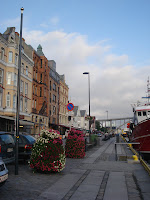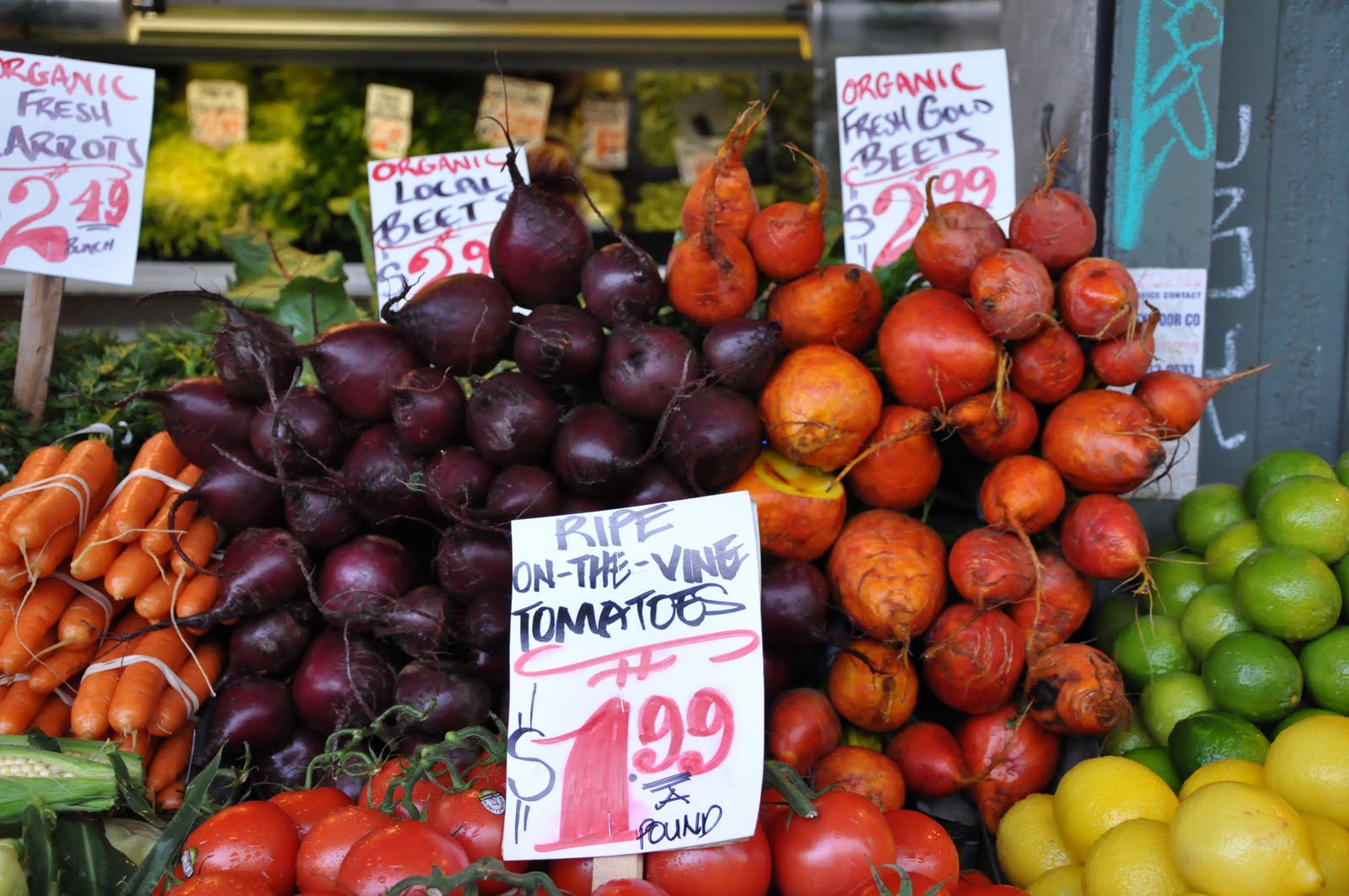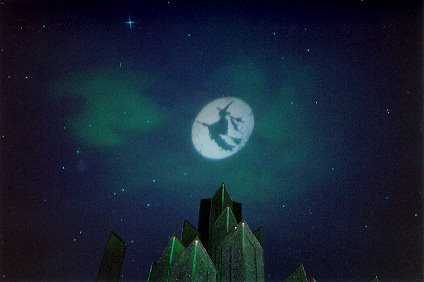The first few days were spent in Haugesund.
"Haugesund was first heard of when Snorre Sturlasson mentioned it in 1217 in connection with the death of Harald Hårfagre (in the year 930). At present the town has a population of 30,000 and is a regional centre with a lot to offer in the fields of culture, commerce and services. The surrounding area served by the regional centre has a population of 160,000 people and comprises Haugalandet, Sunnhordaland and parts of Ryfylke and Hardanger. With the North Sea as its closest neighbour Haugesund is strongly dependent on the earning potential provided by the sea, a fact that leaves its mark on the town. Oil, gas and maritime activities and courses and conferences are important to the town's economy in addition to commerce."
-http://www.visitnorway.com/templates/NTRarticle.aspx?id=41719
Downtown Haugesund at night
 Downtown Haugesund during the day.
Downtown Haugesund during the day.
One night after dinner with PH's host family, they took us for a boat ride on the fjord outside their home. The shore was decorate with lovely homes and scenery. My photos do not do it justice. Views overlooking Haugesund - lots of green and lots of water.
Views overlooking Haugesund - lots of green and lots of water.
 The Norwegian National Monument, Haraldshaugen, commemorates the unification of Norway under Harald Hårfagre.
The Norwegian National Monument, Haraldshaugen, commemorates the unification of Norway under Harald Hårfagre. At the monument was this stone cross, demonstrating the conversion to Christianity. PH's host family explained that soon after the cross was erected, a violent storm snapped it in half and it was put back together with the steel bars at the base. The family had some interesting theories about the breaking of the cross.
At the monument was this stone cross, demonstrating the conversion to Christianity. PH's host family explained that soon after the cross was erected, a violent storm snapped it in half and it was put back together with the steel bars at the base. The family had some interesting theories about the breaking of the cross. This is St. Olav's Church. King Håkon Håkonsson erected the St. Olav’s Church around 1250 AD as part of the royal farm on Avaldsnes. Next to the church stands one of Norway’s tallest pillars, “Jomfru Marias synål” (Virgin Mary’s Sewing Needle). (http://wikitravel.org/en/Haugesund)
This is St. Olav's Church. King Håkon Håkonsson erected the St. Olav’s Church around 1250 AD as part of the royal farm on Avaldsnes. Next to the church stands one of Norway’s tallest pillars, “Jomfru Marias synål” (Virgin Mary’s Sewing Needle). (http://wikitravel.org/en/Haugesund)
According to legend, when the pillar touches the church wall it means the end of the world. PH's host family explained that parts of the top have been chipped off in order to preserve the world. The front door of the church is covered in this metal from World War II that was to prevent damage.
The front door of the church is covered in this metal from World War II that was to prevent damage.
 At the church, we ran into a cycling tour.
At the church, we ran into a cycling tour. One evening, we hiked to an abandoned lighthouse with PH's host brother to watch the sun set over the fjord. This picture was taken at 11:20 P.M.
One evening, we hiked to an abandoned lighthouse with PH's host brother to watch the sun set over the fjord. This picture was taken at 11:20 P.M. On the way to the lighthouse, there is a a monument to those who drowned in a 1999 sinking of a passenger ferry.
On the way to the lighthouse, there is a a monument to those who drowned in a 1999 sinking of a passenger ferry. Not wanting us to miss any of the sights, we were also taken to the copper museum in Visnes. "Visnes is on the island Karmøy. The copper mine closed in 1972." (http://en.wikipedia.org/wiki/Visnes)
Not wanting us to miss any of the sights, we were also taken to the copper museum in Visnes. "Visnes is on the island Karmøy. The copper mine closed in 1972." (http://en.wikipedia.org/wiki/Visnes)These were the compartments in which three workers were lowered into the mines. These compartments were then filled with the copper and sent back up. It appears it would be a tight fit.
 This is where they were lowered into the ground.
This is where they were lowered into the ground. This is where the copper for the Statue of Liberty was initially found. You can still see the impact of the copper in the area by looking at the rocks and the discoloration.
This is where the copper for the Statue of Liberty was initially found. You can still see the impact of the copper in the area by looking at the rocks and the discoloration. And that completes your tour of Haugesund. Have a lovely day!
And that completes your tour of Haugesund. Have a lovely day!



4 comments:
Woow, what great pics and readable post. You really have been some of the most important historical places in Norway!
As a Norwegian I am ashamed to say I've never been to Haraldshaugen, but now I have, thanks to your visit - it was great to see it through your eyes.
No wonder you ran into a cycling tour - there is a lot of them and good to see you notice the land of the midnight sun - almost midnight and still light - you got to love it:-)
Renny - Once I'd completed this post, I couldn't help but think you'd appreciate it. I'm glad to know that I did not bore you with details already known.
All those photos are wonderful, but the bycicle image and the house on the shore make me most want to be there, too!
Wow! It's beautiful. You took some awesome pictures.
Post a Comment